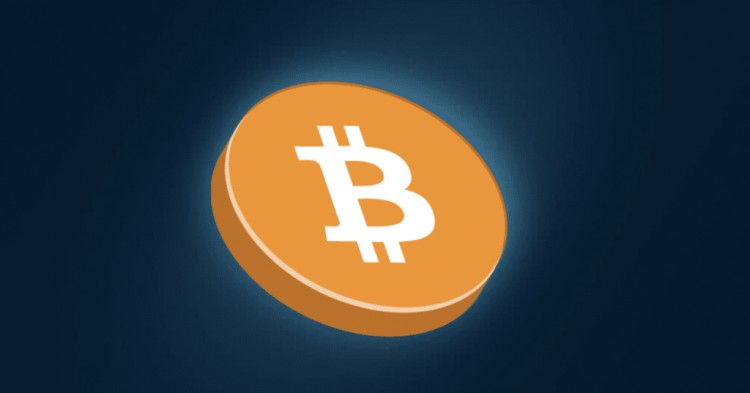摘要:WBTCactsasabridgebetweenthetwoblockchainecosystems,enablingBTCholderstoparticipateinthedecentralizedfinance(DeFi)ecosystemandutilizeEthereum-basedapplications...
Bitcoin vs. Wrapped Bitcoin – What’s the Difference? : Guide
Bitcoin (BTC) and Ethereum (ETH) are two of the most prominent cryptocurrencies on the market.
'No One Really Knows' When a Spot Bitcoin ETF Approval Could Come, Cboe Digital...
While Bitcoin is known for its liquidity and security, Ethereum offers a more versatile blockchain with innovative features like smart contracts and decentralized applications (dApps).
However, the limitations of the Bitcoin blockchain prevent BTC holders from fully utilizing the benefits of the Ethereum network.That’s where wrapped bitcoin (WBTC) comes in.

What is wrapped bitcoin (WBTC)?
Wrapped Bitcoin (WBTC) is an ERC-20 token that represents Bitcoin on the Ethereum blockchain.
It is created by “wrapping” or tokenizing BTC, allowing users to access the functionality of Ethereum while still retaining the value of Bitcoin.
WBTC acts as a bridge between the two blockchain ecosystems, enabling BTC holders to participate in the decentralized finance (DeFi) ecosystem and utilize Ethereum-based applications.
How does WBTC work?
The process of minting WBTC involves collaboration between merchants and custodians.
A user who wants to obtain WBTC sends their BTC to a merchant, who then creates an equivalent amount of WBTC on the Ethereum network.
The BTC is custodied by the merchant, ensuring transparency and accountability.
The user is then issued an equal amount of WBTC, which can be freely transferred, traded, and utilized within the Ethereum ecosystem.
Advantages of WBTC

Access to DeFi Opportunities: WBTC allows BTC holders to access a wide range of DeFi opportunities within the Ethereum ecosystem. They can participate in lending, borrowing, yield farming, and liquidity mining, taking advantage of Ethereum’s extensive DeFi infrastructure.
Seamless Trading: WBTC enables seamless trading of Bitcoin on decentralized exchanges (DEXs) operating on the Ethereum network. Users can easily trade their WBTC tokens for other ERC-20 tokens without the need for traditional centralized exchanges.
Compatibility with the Ethereum Ecosystem: As an ERC-20 token, WBTC is compatible with the entire range of Ethereum-based applications, including wallets, dApps, and smart contracts.
Faster Transaction Confirmation: Ethereum’s faster block confirmation times compared to Bitcoin enable faster transaction settlements when using WBTC. This is particularly advantageous for users engaging in arbitrage, decentralized trading, or time-sensitive transactions.
Increased Liquidity: WBTC brings additional liquidity from Bitcoin investors to the Ethereum network, enhancing overall liquidity within the ecosystem.
Cross-Chain Interoperability: WBTC serves as a bridge between the Bitcoin and Ethereum blockchains, allowing for cross-chain interoperability and fostering innovation and collaboration between the two ecosystems.
Comparison: WBTC vs. Bitcoin
While WBTC represents Bitcoin, it is important to note that there are some differences between the two:
Blockchain: Bitcoin operates on its blockchain, while WBTC is built on the Ethereum blockchain.
Token Format: Bitcoin is a native cryptocurrency, while WBTC is an ERC-20 token.
Functionality: Bitcoin has limited functionality compared to Ethereum. WBTC enables BTC holders to access the extensive functionality of the Ethereum network, including the use of smart contracts and participation in DeFi applications.
Liquidity: WBTC enhances liquidity within the Ethereum ecosystem by bringing Bitcoin’s liquidity to the Ethereum network.
Trading: While Bitcoin primarily trades on centralized exchanges, you can trade WBTC on decentralized exchanges (DEXs) within the Ethereum ecosystem.
How to obtain WBTC
To obtain WBTC, BTC holders can approach one of the merchants who serve as custodians for the Bitcoin backing WBTC.
The user transfers their desired amount of BTC to the merchant, who then creates an equivalent amount of WBTC on the Ethereum network.
Subsequently, the platform issues the user with corresponding WBTC tokens, signifying their ownership of the underlying BTC.
Popular WBTC Tokens

Several tokenized representations of Bitcoin exist, with wrapped Bitcoin (wBTC) being the most well-known.
Other options include Huobi BTC (HBTC) and RenBTC, each with its own unique features and mechanisms for tokenization and redemption.
Use Cases for WBTC
WBTC offers several use cases within the Ethereum ecosystem, including:
Access to DeFi: WBTC allows BTC holders to participate in lending, borrowing, yield farming, and liquidity mining in the DeFi ecosystem.
Trading and Investment: WBTC enables seamless trading of Bitcoin on DEXs, eliminating the need for traditional centralized exchanges. It also allows users to easily hold Bitcoin alongside their other Ethereum-based investments.
Token Sales and Decentralized Trading: Utilizing WBTC enables participation in token sales and decentralized trading within the Ethereum ecosystem.
Collateral for Loans: Platforms like MakerDAO accept WBTC as collateral, offering BTC holders expanded financial prospects for securing loans.
Regulation and security
WBTC is subject to the same regulations as other cryptocurrencies, including anti-money laundering (AML) and know-your-customer (KYC) requirements.
The custodians of WBTC tokens play a crucial role in ensuring the security and compliance of the wrapped tokens.
Conclusion: Bitcoin vs. Wrapped Bitcoin – What’s the Difference?
Wrapped Bitcoin (WBTC) serves as a bridge between the Bitcoin and Ethereum ecosystems, allowing BTC holders to access the functionality of Ethereum while retaining the value of Bitcoin.
Through WBTC, users can participate in DeFi applications, seamless trading, and various other activities within the Ethereum ecosystem.
As the popularity of DeFi continues to grow, WBTC is expected to play a crucial role in connecting these two prominent blockchain networks.
#BTC #WBTC




